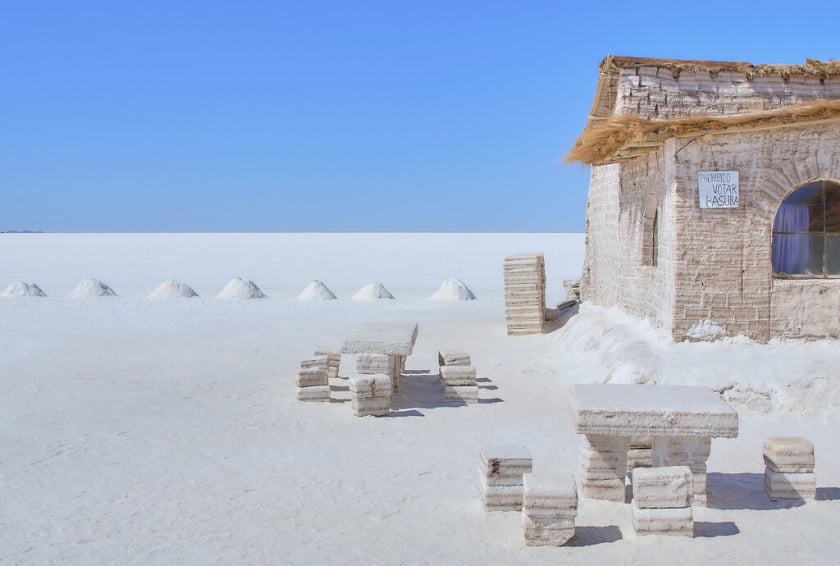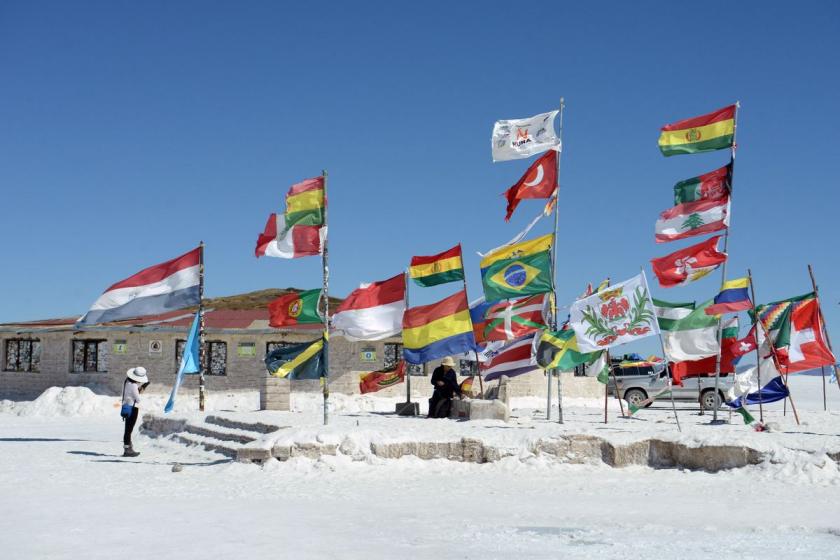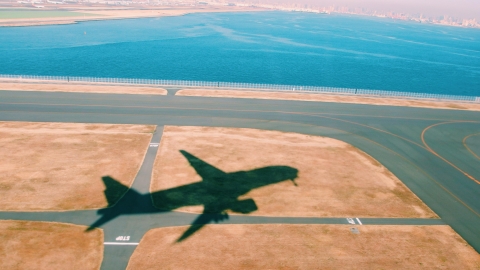Salar de Uyuni stretches over 10,500 km2At 3,650 m above sea level, the area's terrain is completely flat and dotted with small “islands” such as Isla Incahuasi.
The salt flats were formed because the Altiplano plateau has no outlet, so as the water evaporates under the harsh sun, a layer of salt and calcium sulfate remains on the ground. Together with the wind, the salt in Salar de Uyuni is constantly changing over time.
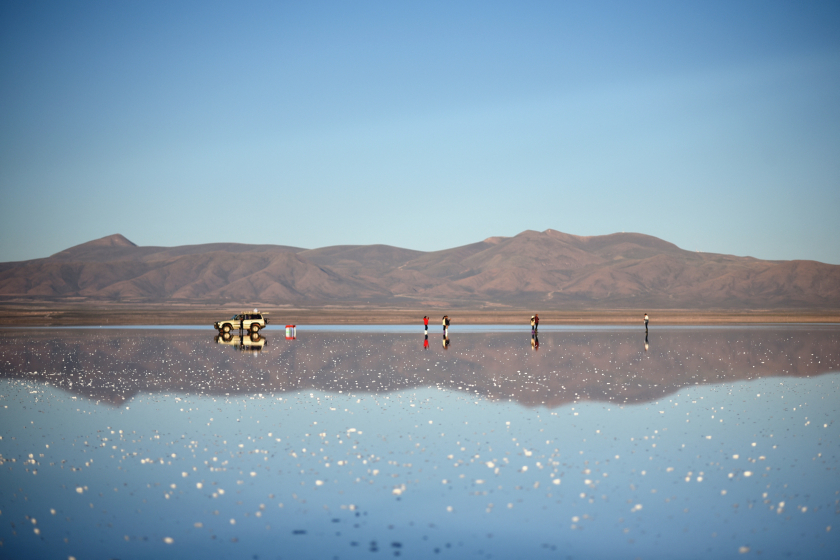
When there is stagnant water, the salt flats become a giant mirror reflecting everything.
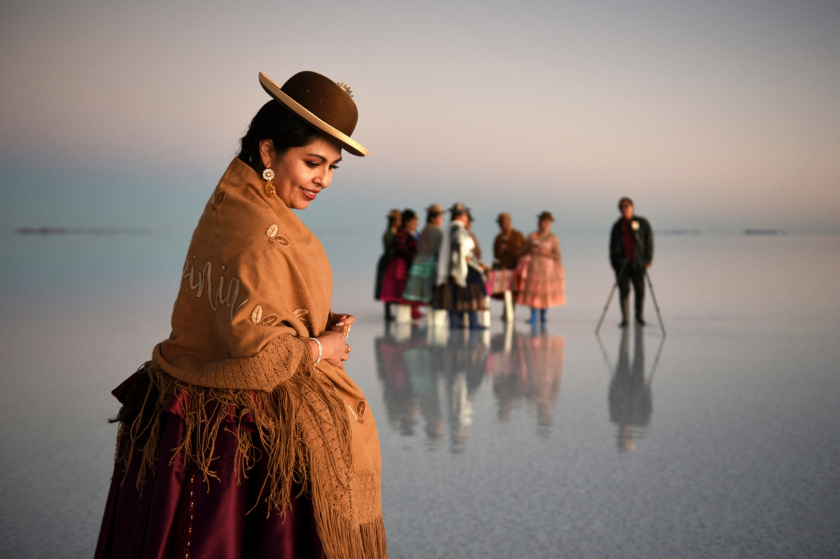
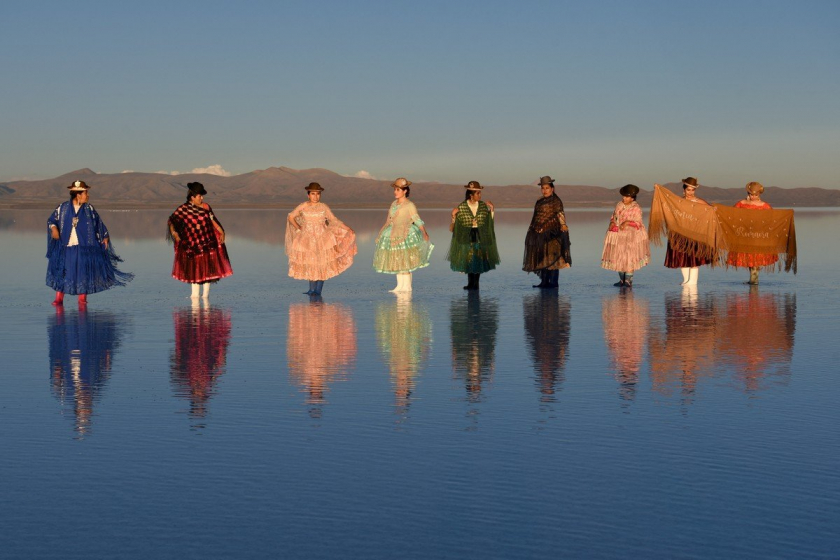
Bolivian women dressed in traditional Cholita skirts pose on the salt flats
Scattered throughout the salt flats are remnant volcanoes, creating striking black dots against the white landscape. Visitors can also see traces of coral and shells around the area, which was a giant saltwater lake about 40,000 years ago.
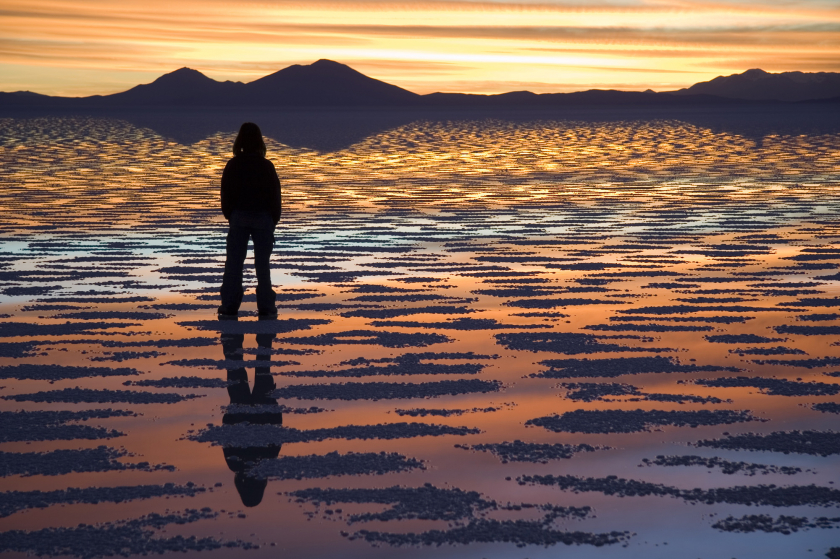

The backlit moment in Uyuni also creates quite unique images.
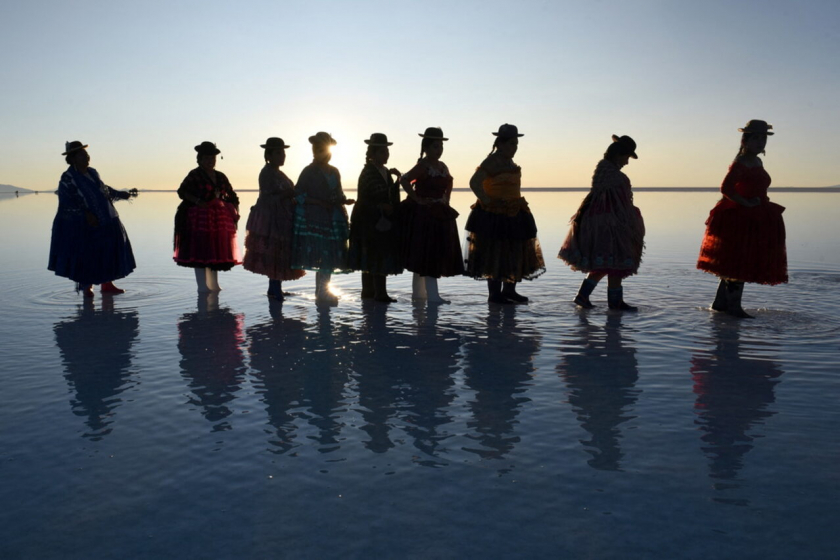
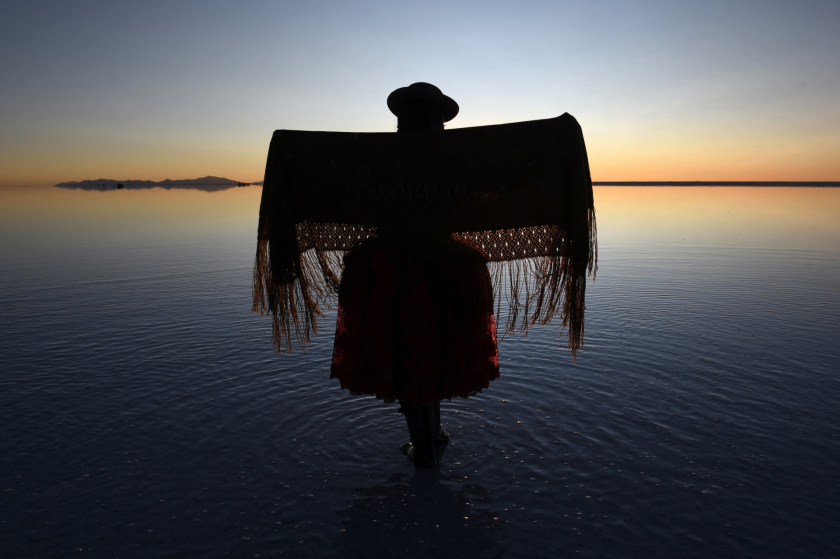
During the rainy season in southwest Bolivia, the thin water turns Salar de Uyuni into a giant mirror. The climate is harsh, with cold nights, strong winds and only 400 mm of rain per year.
The most popular way to visit the Salar de Uyuni salt flats is by off-road truck tour. Each tour has a maximum of 6 people. You will need to bring enough warm clothes, sleeping bags, raincoats, boots, sunscreen, and accessories to reduce the impact of the sun on your eyes and skin.
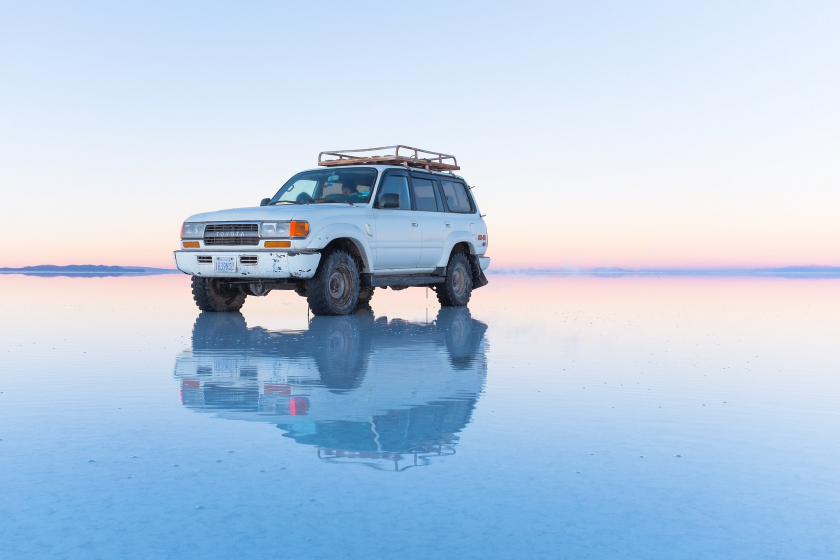
The best time to visit Salar de Uyuni is in July and October, when the weather is quite pleasant. However, to admire the giant mirror, visitors should come here in March and April. Most tours to the salt flats depart from the towns of Uyuni or Tupiza.
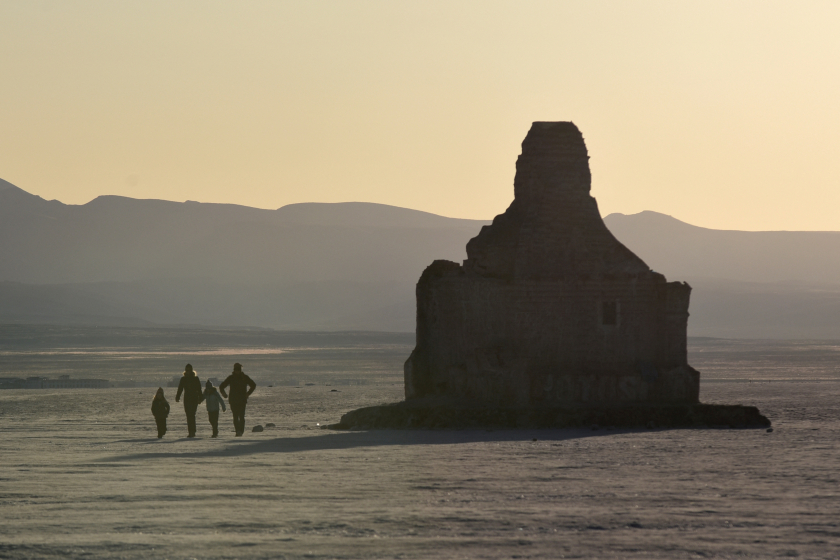
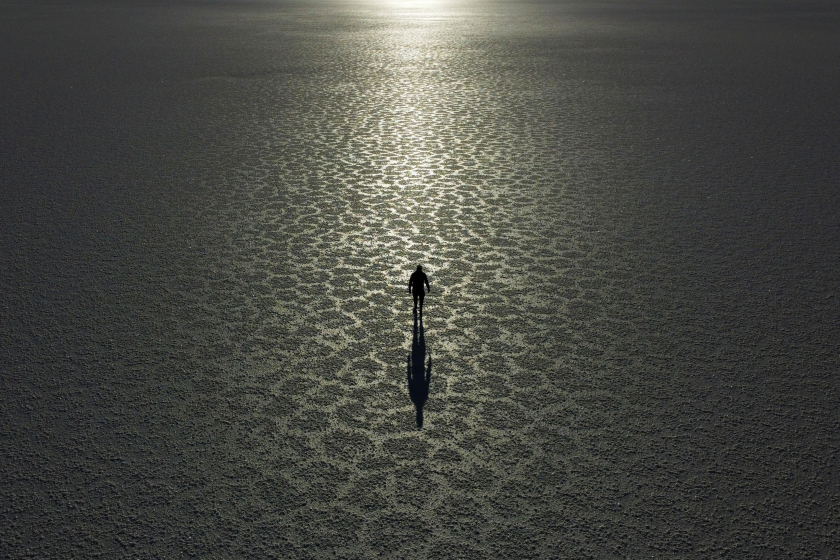
Due to the remote location and altitude of up to 5,000m, the tours can cause health problems such as altitude sickness, shortness of breath and dizziness. To overcome this, visitors can acclimatize to the altitude in La Paz for a few days or bring medication.

A local boy lies down on the salt floor, taking pictures of the dinosaur up close and tourists posing playfully in the distance.
To get here, visitors can choose flights to Ororo city, then connect by train or bus, travel time 7 - 8 hours. In addition, visitors can also depart from La Paz city and Potosi city.
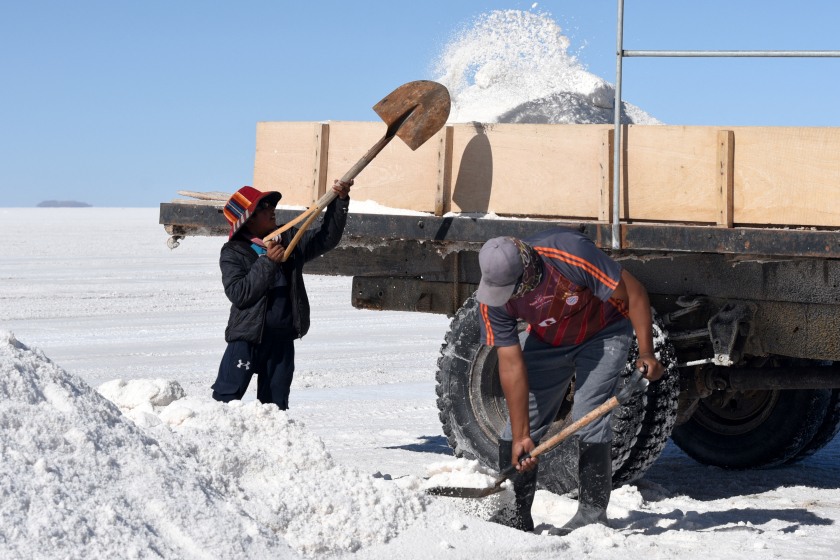
Not only an attractive tourist destination, this giant salt flat is also the source of livelihood for many Bolivian families.
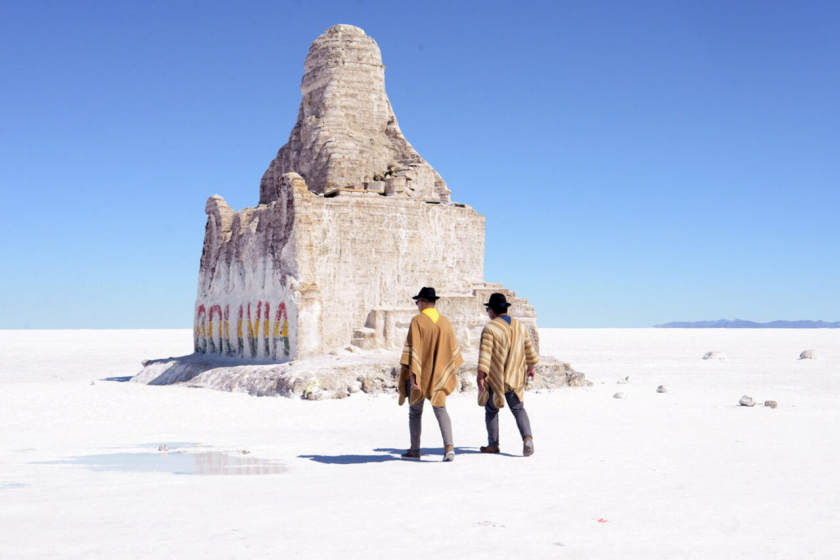
Salt architecture in the Uyuni salt flats
If you have come to Salar de Uyuni, you should experience staying at the famous salt hotel in the area. Due to the geographical location, it is difficult to transport raw materials, so the locals have created bricks from salt blocks. In addition, beds, tables, and toilets are also made from this material.


